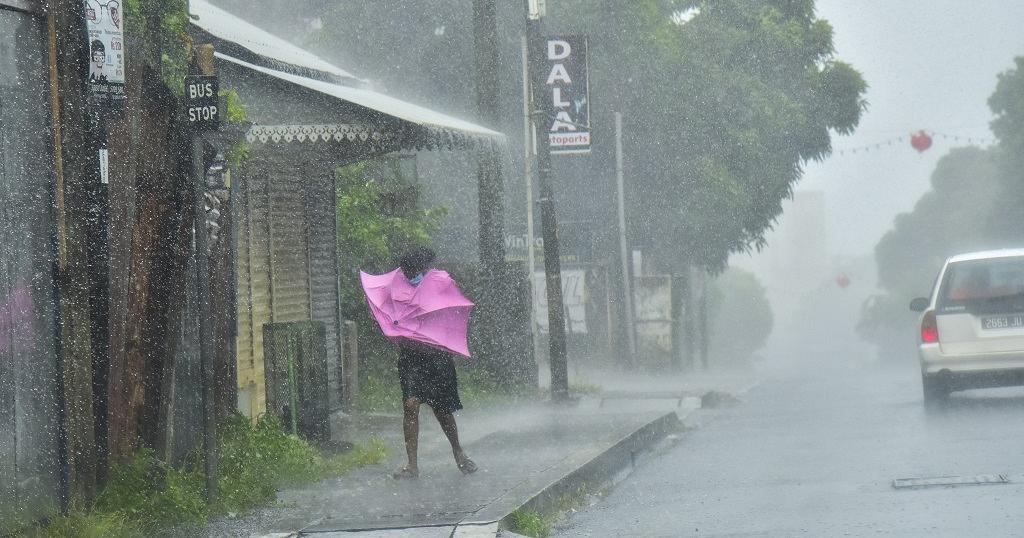HIGHLIGHTS
• Tropical Cyclone Batsirai made landfall in Madagascar, just north of the city of Mananjary, in Vatovavy region, on Saturday, 5 February, as an Intense Tropical Cyclone (Category 3 equivalent) with wind
speeds of 165 km/h and wind gusts of up to 230km/h.
• At least 10 people have died and more than 43,200 are displaced across 180 sites, according to an update received from the national disaster management agency (BNGRC) on 6 February.
• Relief efforts are underway and rapid assessments have begun, which will identify the full scale and scope of the disaster.
SITUATION OVERVIEW
Tropical Cyclone Batsirai made landfall as an Intense Tropical Cyclone (Category 3 equivalent) on the east coast of Madagascar—14 kilometres north of the city of Mananjary—at 8 p.m. local time on Saturday, 5
February 2022. As it made landfall, Batsirai recorded wind speeds of 165km/h and wind gusts of up to 230km/h. The most affected districts are Nosy Varika, Mananjary and Manakara, according to preliminary information. At least 10 people have died, some 43,236 people are displaced across 180 sites, and at least 211 schools have been affected, according to preliminary information received from the National Disaster Risk Management Agency (BNGRC). These figures are expected to rise in the days ahead, as more information becomes available, including in areas that have not yet reported on the destruction and damage caused by Tropical Cyclone Batsirai, including Mananjary district.
Tropical Cyclone Batsirai’s wind and rains have caused considerable damage to transport infrastructure, leaving some of the hardest-hit areas inaccessible by road. At least 19 roads and 17 bridges have been cut, according to the latest update from the BNGRC, with some of the towns that were devastated by the cyclone, such as Manankara, currently unreachable. Although a flood watch warning was issued for the Mananjary river basin, where river levels rose from 1 metre to 3 metres between 3 and 6 February at Tsaravary, it was lifted on 7 February as water levels began to decline.
The devastation wrought by Batsirai has compounded the suffering caused by the passage of Tropical Storm Ana and an Intertropical Convergence Zone in Madagascar less than two weeks ago. Tropical Storm Ana—which was a depression when it crossed Madagascar—left 55 people dead and affected 132,000, including 15,152 people who remain displaced, with 14,938 of them sheltering temporarily in 68 centres across the Analamanga region. The damage and destruction caused by Ana and the Intertropical Convergence Zone caused the Government of Madagascar to declare a State of Emergency on 27 January.
The Tropical Cyclone Batsirai weather system has now entered the Mozambique channel, where it is moving southwards and away from land. It has lost much of its strength and was classified as Post-Tropical Depression ex-Batsirai at 4 p.m. on Monday, 7 February.

EMERGENCY PREPAREDNESS & RESPONSE
Following Intense Tropical Cyclone Batsirai’s landfall, the Government activated search, rescue and evacuation efforts, including an emergency evacuation in Lokomby and Ivatana, Manakara District, on 6 February, and a helicopter rescue operation in Ivohibe, Ihorombe region. The BNGRC activated the national Emergency Operations Centre (CERVO) on 4 February and local operations centres have been established in five locations (Mahanoro, Mananjary, Manakara, Atsinanana and Atsimo Atsinanana) to coordinate the response.
Assessments have begun today, with the first aerial assessment taking place via an UNHAS flight. This will be complemented by multisectoral needs assessments by teams on the ground in the coming days, which will provide a more comprehensive overview of the situation and help inform response priorities in the days ahead. The Government is providing cash transfers for vulnerable households impacted by the cyclone, while humanitarian partners have deployed surge teams and are ramping-up their responses. WFP has started distributing hot meals to 4,000 evacuated and displaced people in shelters, in coordination with Government authorities.
Protection partners, including UNICEF and its government counterpart DRPPSPF, are providing kits to establish child-friendly spaces (“Sahan’ny Ankizy”) in Analamanga, Anosy and Analanjirofo regions, as well as training social workers on gender-based violence (GBV) and the prevention of sexual exploitation and abuse (PSEA) in the Analamanga, Analanjirofo, Atsinanana, Vatovavy, Fitovinany
and Anosy regions. UNFPA and its partners—including MPPSPF, CECJ and the Ministry of Health—are providing psychological first aid in Manakara, Fianarantsoa, Vangaindrano, Mahabako and Taolagnaro (Fort-Dauphin), distributing dignity kits for women and girl survivors of GBV in the Vatovavy, Fitovinany, Atsimo Andrefana, Anosy, Androy regions, and providing medical care for survivors of sexual violence).
With the support of the START fund, NGO partners are: providing primary health care, referrals, treatment of sexual violence and psychological first aid in Vatomandry (Médecins du Monde); and implementing a rapid needs assessment to identify the most vulnerable households, as well as sensitizing households on gender-based violence and PSEA, ahead of planned cash distributions for 1,200 households in Vatomandry and Brickaville (CRS and ODDIT). Separately, CARE has deployed teams from the capital, Antananarivo, in Vatomand.
Source: OCHA

